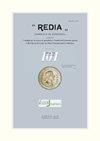SHELTER BUILDING BY LARVAE OF PHYCITA DIAPHANASTAUDINGER, 1870 (LEPIDOPTERA PYRALIDAE) USING RICINUS COMMUNISL. IN ARID ZONE
IF 0.6
4区 生物学
Q3 ZOOLOGY
引用次数: 0
Abstract
In July 2017, in south-eastern Tunisia, larvae of Phycita diaphanawere observed on seedlings of castor bean. Infested pointed lobes of the leaves are characterized by the presence of shelters or nests ranging from oneto six shelters per leaf. The shelter area ranged from 1.01 to 28.27 cm2. In each shelter, we found from one to nine larvae. We conclude thatPh. diaphana spends the whole larval stage protected without changing its feeding habits.The leaf roll may reduce leaf toughness and lower levels of plant defensive chemicals, and hence provides a more easily and more safely eaten food. Larvae of Ph. diaphana use the pointed lobe to build its shelter. As Castor bean is used in several fields of economy, mainly the production of biodiesel fuel, the monitoring of this pest will be important and interesting. Thereby, studying the life cycle of pests constitute a significant element of phytosanitary control.利用蓖麻建造黄藻幼虫的庇护所,1870年(鳞翅目锥虫科)。在干旱地带
2017年7月,在突尼斯东南部,在蓖麻幼苗上观察到麻蚜幼虫。被侵染的叶尖裂片的特征是每片叶子有一到六个庇护所或巢穴。遮蔽面积从1.01到28.27平方厘米不等。在每个避难所,我们发现了一到九只幼虫。我们得出结论,ph。蝶蛹在整个幼虫期都受到保护,不改变它的摄食习惯。卷叶可以降低叶片韧性和降低植物防御化学物质的水平,因此提供了更容易和更安全的食物。Ph. diaphana的幼虫用它的尖叶来建造庇护所。蓖麻被广泛应用于多个经济领域,主要是生物柴油燃料的生产,因此对蓖麻害虫的监测将是一个重要而有趣的问题。因此,研究害虫的生命周期是植物检疫控制的重要内容。
本文章由计算机程序翻译,如有差异,请以英文原文为准。
求助全文
约1分钟内获得全文
求助全文
来源期刊

Redia-Giornale Di Zoologia
ZOOLOGY-
CiteScore
1.20
自引率
20.00%
发文量
18
审稿时长
>12 weeks
期刊介绍:
Redia supports its long history of basic and applied research in entomology and invertebrate zoology in the field of crop and forest tree protection responding at the same time to the increasing need of innovation and technological improvement.
 求助内容:
求助内容: 应助结果提醒方式:
应助结果提醒方式:


